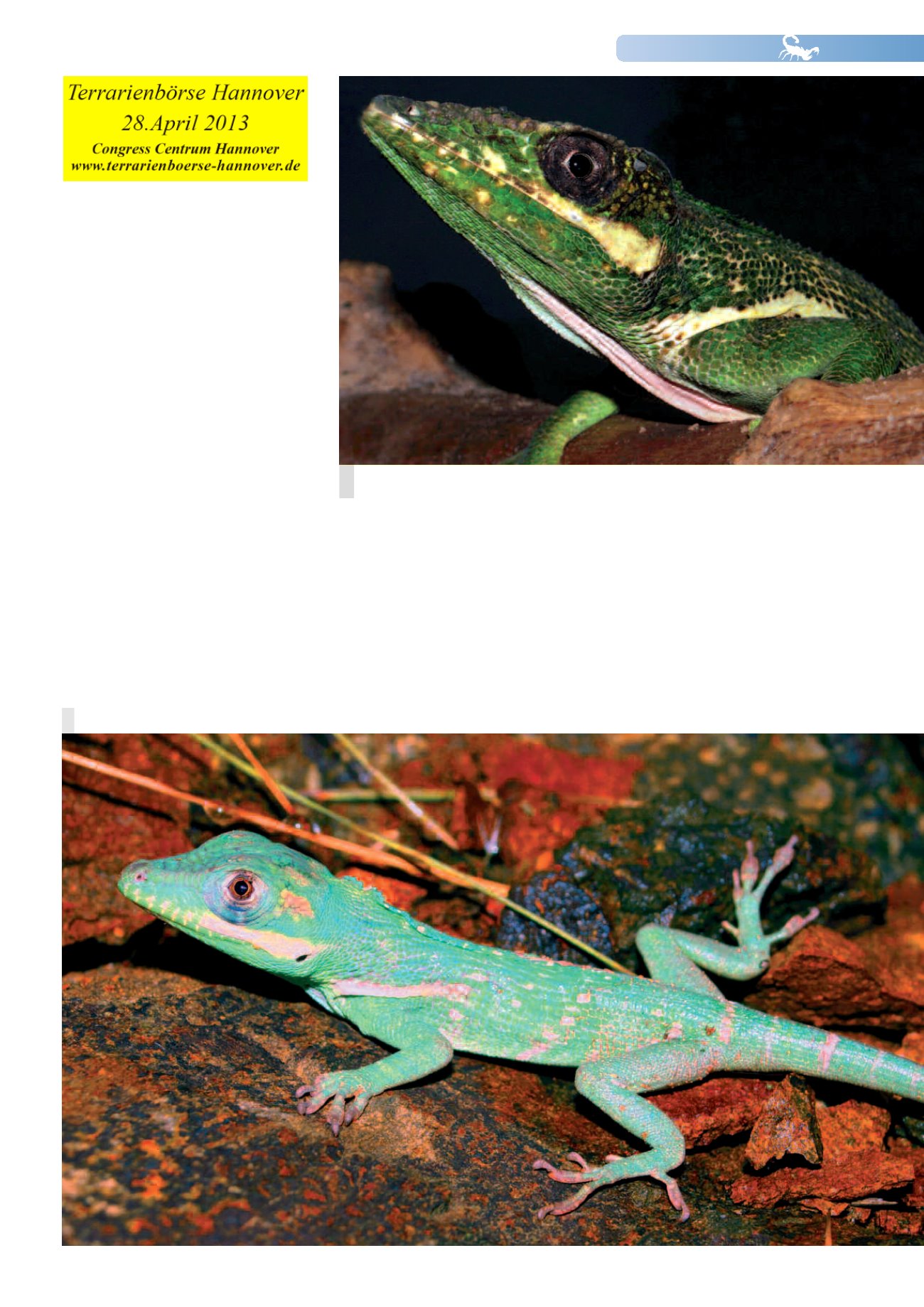
NEWS106
39
AdultmaleKnightAnole.Thedewlap isadelicatepink incolor.
NewlyhatchedKnightAnole.Thehead inyoung specimens isnoticeably shorter than thatof adults,but theyarealready the samecolor.
nate subspecies.The scientific status of the
KnightAnoles found in the trade is likewise
unclear, but as a rule they originate from
breeding farms in theUSA.
Anolis
wave flags
Despiteallthedifferencesbetweenthem,the
Anolisspeciesalsoexhibita lotof features in
common.This, for example,all species have
prehensile toes. Theymay not be quite as
good at climbing vertical glass surfaces as
manygeckos,but theyaren’t farbehind.The
German name (now somewhat out of fa-
shion)“Saumfinger”(whichmeans“seam fin-
ger”) for
Anolis
refers to thespecial structure
of the toes.
Andall A
nolis
haveextensibledewlaps that
areverystrikingandspecies-specific in their
coloration.They are“waved”mainly by the
males,but by females aswell in theKnight
Anole.Thishasarathersimilarfunctiontosin-
ging inbirds.Displayingthedewlap indicates
thattheterritory isoccupiedandwarnscon-
specifics toclearofforelsetherewillbetrou-
ble. For Anolis are rather intolerant of one
another.Twomalescanneverbekepttoget-
her in the terrarium, and femalesmay also
quarrel.Hence it isbest tokeepKnightAno-
les inpairs.
Recently (Nicholson et al. 2012) there has
beenanattempt to clarify the classification
of the largenumber of species inAnolisby
dividing themup intoanumberofdifferent
genera. According to this work the Knight
Anole shouldbeassigned to thegenus
Dei-
roptyx
andwould thenbe called
Deiroptyx
equestris.
TheworkofNicholsonetal.isamat-
terofvigorouscontroversyamongspecialists
in the field.


